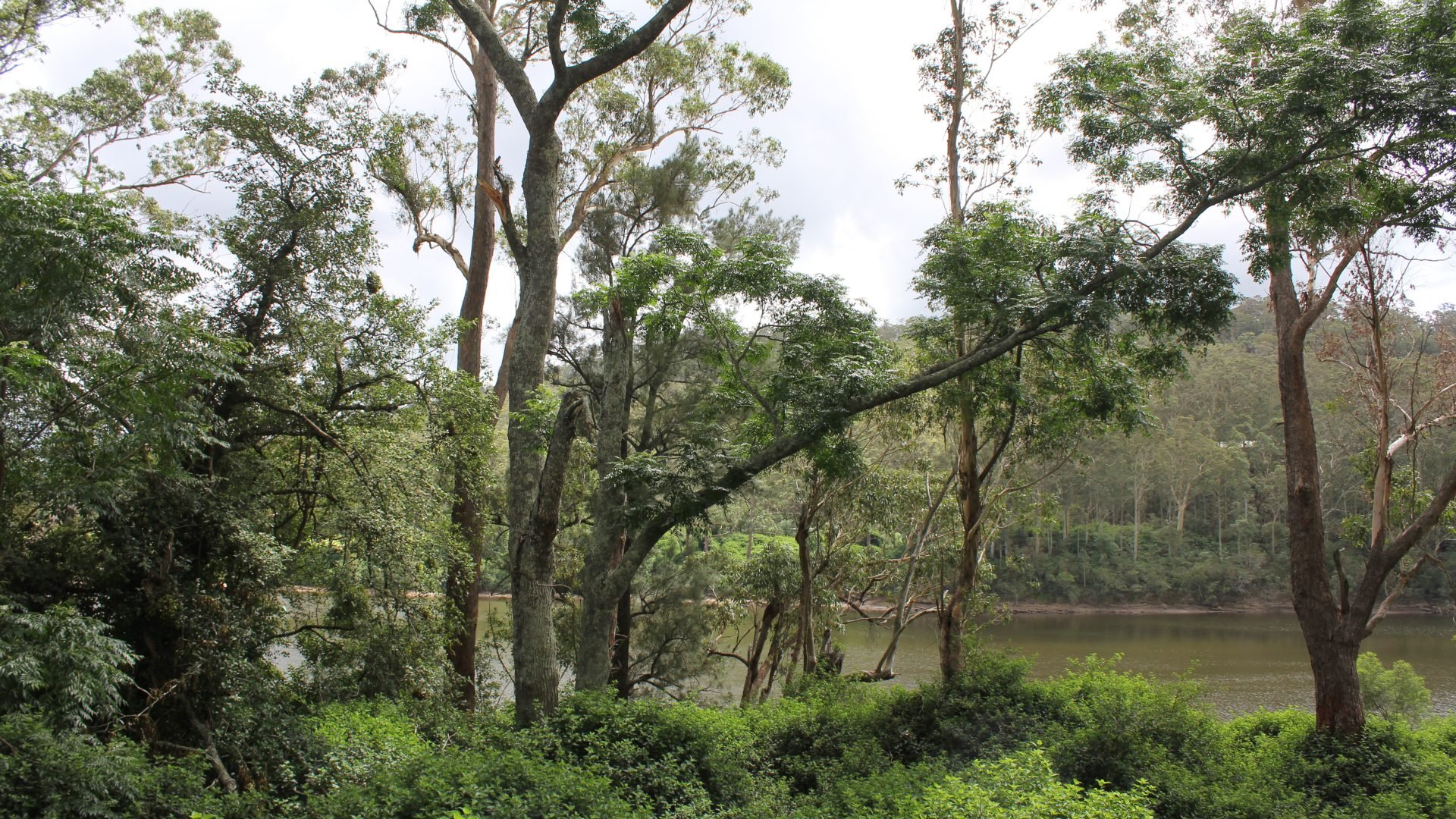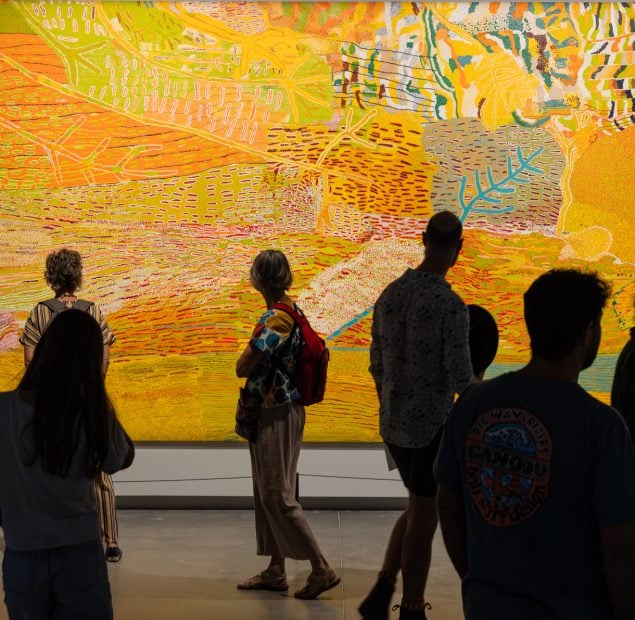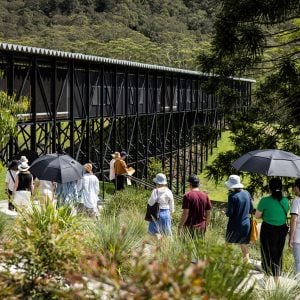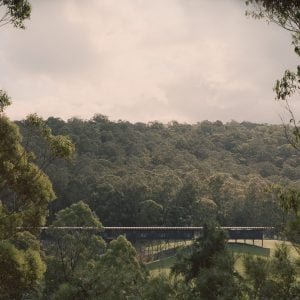This apparently insignificant small brown moth is a huge problem for growers of Australian Red Cedar (Toona ciliata) trees. In partnership with Bayer Pharmaceuticals, Bundanon‘s Natural Resource Management team are leading the way in new technology development to ease the burden for regional growers.
Commonly known as the Red Cedar, Toona ciliata is a large rainforest tree up to a height of 40–60 metres. Due to its size and valuable timber this species has been extensively logged since European settlement, particularly in the Illawarra Shoalhaven area.
The Cedar tip moth, or shoot-borer, Hypsipyla robusta, lays eggs on the trees and their larvae bore into the stems, which effects the transport of nutrients within the tree. Infected specimens can brown off and drop all their leaves often in a couple of weeks. They sometimes survive and sprout new leaves in the following spring, and sometimes they die.
Trees occurring in the shade of a rainforest-like canopy, including those along Bundanon’s Haunted Point Loop, are generally not affected. But trees growing in full sun are often attacked.
Current products to treat the moth are prohibitively expensive for Bundanon to purchase for our small number of young trees. This, in part, explains why Red Cedar timber is so sought after. Many millions of cubic metres of timber were harvest from forests of the eastern Australian coast in the early colonial days, and although they germinate easily in the forest, they are slow to reach harvestable size. The Tip Moth makes it an extremely difficult tree to grow in plantation situations.
The Cedars section of Janet Laurence’s Treelines Track includes a couple of dozen Red Cedars as well as the un-related White Cedars. Almost all the Red Cedars are currently displaying a degree of deterioration. Although we lose different types of trees commonly across Bundanon’s properties, our team works closely with Janet to protect the specimens that are living components of the artist’s work.
Bundanon has established a relationship with Bayer Pharmaceuticals, a multi-national company which develops and produces agricultural products. In February 2022, Bayer commenced a trial of a new product to treat the larvae. The treatment is specific to tree borers in their larval stage and is not believed to have any impact on soil health or waterways or other species. It can be applied by soil drench (a watering can) on younger trees or stem injection on larger specimens. This unique scientific project at Bundanon currently involves 13 trees. Some have been left un-treated, and others have been treated with various dilutions of the product, to help Bayer understand its effectiveness and ideal rate of application.
The experiment will be monitored closely by a team of experts from Bayer, alongside Bundanon’s own team.







